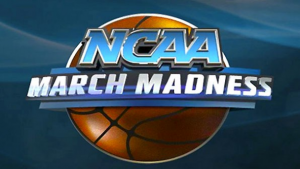College Basketball Handicapping – Keys to NCAA Tournament Success
How to Evaluate Teams and Keys to NCAA Tournament Success
Article posted at osga.com.
With college basketball conference tournaments continuing and the postseason tournaments upon us including the big dance, NCAA tournament, the astute handicapper, bettor and fan can better position themselves for success in betting games or tournament pools by knowing the strengths and weaknesses of both conferences and teams.
Here are some thoughts and key considerations in handicapping college basketball and tournament play. While there have been changes in the college game over the years, the fundamentals of college basketball remain the same when evaluating the teams and match-ups. I have relied on these fundamentals in many of my game analysis while using statistical profiles, situations, and scheduling in the match-up analysis.
 The NCAA wanted more scoring in college basketball following record-low scoring two seasons ago at 67 points per game. The rule changes created just that, although not necessarily for the better of the game. The 30 second shot clock and less clutching and grabbing allowed for more free flowing play with the stronger and more athletic teams gaining an ever greater advantage.
The NCAA wanted more scoring in college basketball following record-low scoring two seasons ago at 67 points per game. The rule changes created just that, although not necessarily for the better of the game. The 30 second shot clock and less clutching and grabbing allowed for more free flowing play with the stronger and more athletic teams gaining an ever greater advantage.
In the elimination format of the NCAA Tournament and any postseason game, one poor stretch of play or a scoring drought can quickly end a team’s season. Likewise, a team that gets hot from the 3-point arch can ride that momentum to a victory. When handicapping a contest, the biggest statistical discrepancy can come in 3-point shooting, yet it is often the hardest to predict. Evaluating how a team and players will perform under pressure in an elimination format can be a challenge. The difficulty for many handicappers and bettors is breaking down the match-ups with less familiar teams. Evaluating the statistical information, interpreting the data and analyzing how teams and players will perform when facing a different level of class opponent often keeps bettors away from unknown teams. That’s where the intangibles of coaching, momentum, injuries, experience, leadership and team chemistry play a part. And of course the great equalizer in the point spread.
 The most value in the NCAA Tournament and postseason party lies in the opening week of action, and it’s up to us to determine where the value lies along with the strengths and weaknesses of the teams. The technical side (relevant patterns) of the equation comes in evaluating situations and past performance such as a team’s strength of schedule, performance playing on the road, results and level of play versus quality teams and understanding contrary patterns.
The most value in the NCAA Tournament and postseason party lies in the opening week of action, and it’s up to us to determine where the value lies along with the strengths and weaknesses of the teams. The technical side (relevant patterns) of the equation comes in evaluating situations and past performance such as a team’s strength of schedule, performance playing on the road, results and level of play versus quality teams and understanding contrary patterns.
We can discuss quality guard play, interior post presence, 3-point and free throw shooting, pace of play and a go-to-guy in any match-up. But in so many contests, and especially competitively-lined games, the team that defends the best, rebounds and takes care of the basketball can often overcome the opponent or their own off-shooting night. So here are some of the fundamentals to evaluate in upcoming games and postseason play.
Defense: While scoring continues to get headlines and highlights, teams that play defense and minimize turnovers and second chance opportunities will win more games. Coaching often plays a part in a team’s discipline on defense, and teams that play hard on the defensive end are worth supporting. The type of defense a team plays may vary from game to game with man-to-man, zone or full court pressure. Teams that have quality athletes and flexibility to adjust are your best bets (think West Virginia & top coach Huggins). After a full season of results, the overall body of work and numbers should tell the story. Key stats to analyze are defensive field goal percentage and turnovers forced, with overall points-per-game allowed also of note, especially versus quality teams. I prefer to utilize stats from conference play in the stronger NCAA Tourney Conferences, and look at how teams outside of the top 40 performed against better competition. Look at a team’s offensive tempo, and if a team has an efficient offense with a relatively high number of attempts and still plays solid defense, you likely have a team worth plenty of support (think Kansas, North Carolina and Gonzaga).
Offense: With the top teams playing in the NCAA Tournament, many teams are capable on the defensive end of shutting down one scoring option (think Virginia, Oregon). Look for teams with quality point guard play and scoring balance, both from the perimeter and inside (think Kansas, Purdue, Villanova, UCLA). Quality depth can be a factor, but teams will rely on their top players at crunch time. Recognize a team’s assist-to-turnover ratio. The ability to play in the half court with an efficient offense and balanced scoring options will separate teams, especially in the second half as some teams start to wear down. Thus, unselfish teams that value and take care of the basketball and give their teammates good looks will ultimately win out with productive shooting.
 Rebounding: One of the most overlooked areas in handicapping is evaluating a team’s ability to rebound the basketball. The key here is rebounding margin, which goes together with a team’s defensive field goal percentage (think North Carolina, Baylor). Teams that are physical, strong and athletic on the boards also create more fouls on the opponent and get to the free throw line more often. The top teams will always be strong in these areas, and the ability to control the boards and minimize second-chance points will go a long way in determining whether a team advances or not.
Rebounding: One of the most overlooked areas in handicapping is evaluating a team’s ability to rebound the basketball. The key here is rebounding margin, which goes together with a team’s defensive field goal percentage (think North Carolina, Baylor). Teams that are physical, strong and athletic on the boards also create more fouls on the opponent and get to the free throw line more often. The top teams will always be strong in these areas, and the ability to control the boards and minimize second-chance points will go a long way in determining whether a team advances or not.
Use these thoughts and additional stats including scoring margin as a guide as you dig into the games, and approach each contest as a separate match-up without over-reacting to the most recent result. That will also help you identify potential value in the line with public perception impacting the line makers decisions as well. If you don’t have the time, energy or ability to research stats, situations and win more when betting college basketball, then join me for my insight, analysis and picks throughout the NCAA Tournament and postseason parties.
Note that the National Invitational Tournament (NIT) will experiment with rules to speed up the game. Team fouls will reset halfway through each half. They hope this will combat games being turned into free throw shooting contests when both teams are in the double bonus. Regardless, all the tournaments and betting action will be robust and sticking with some of these fundamental concepts and ideas should guide you to more layups when wagering.

 Twitter
Twitter Facebook
Facebook